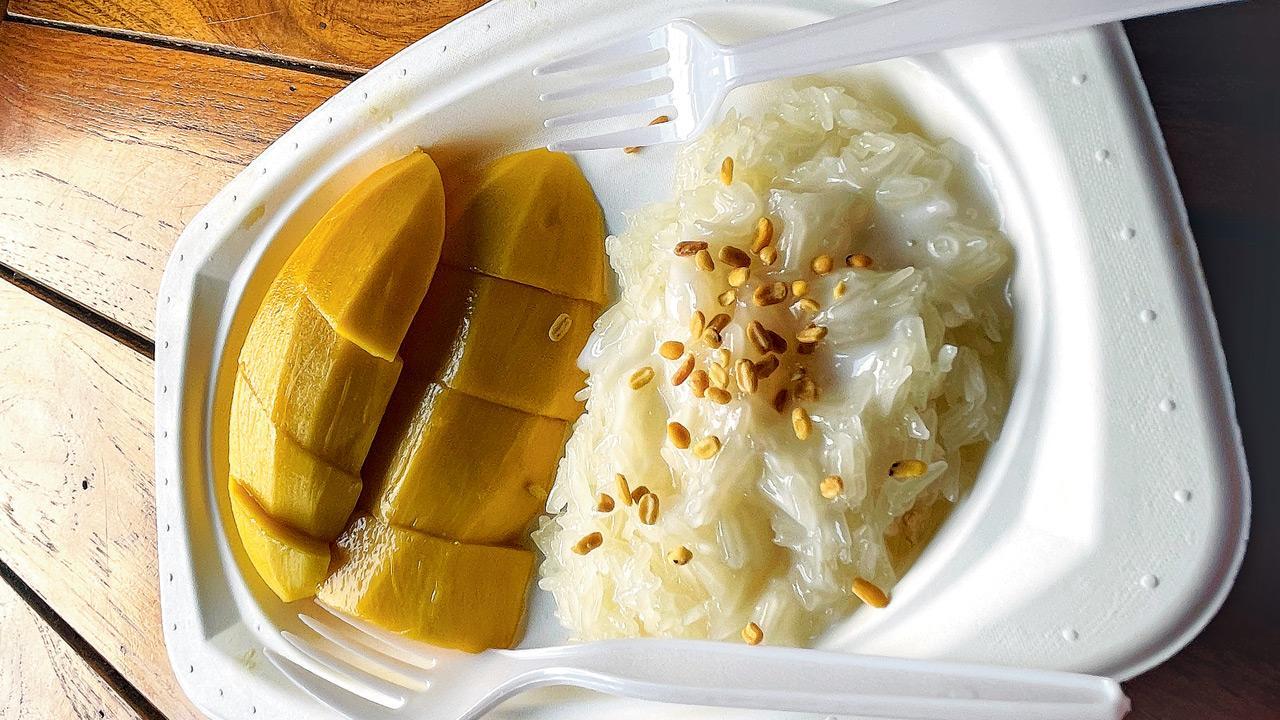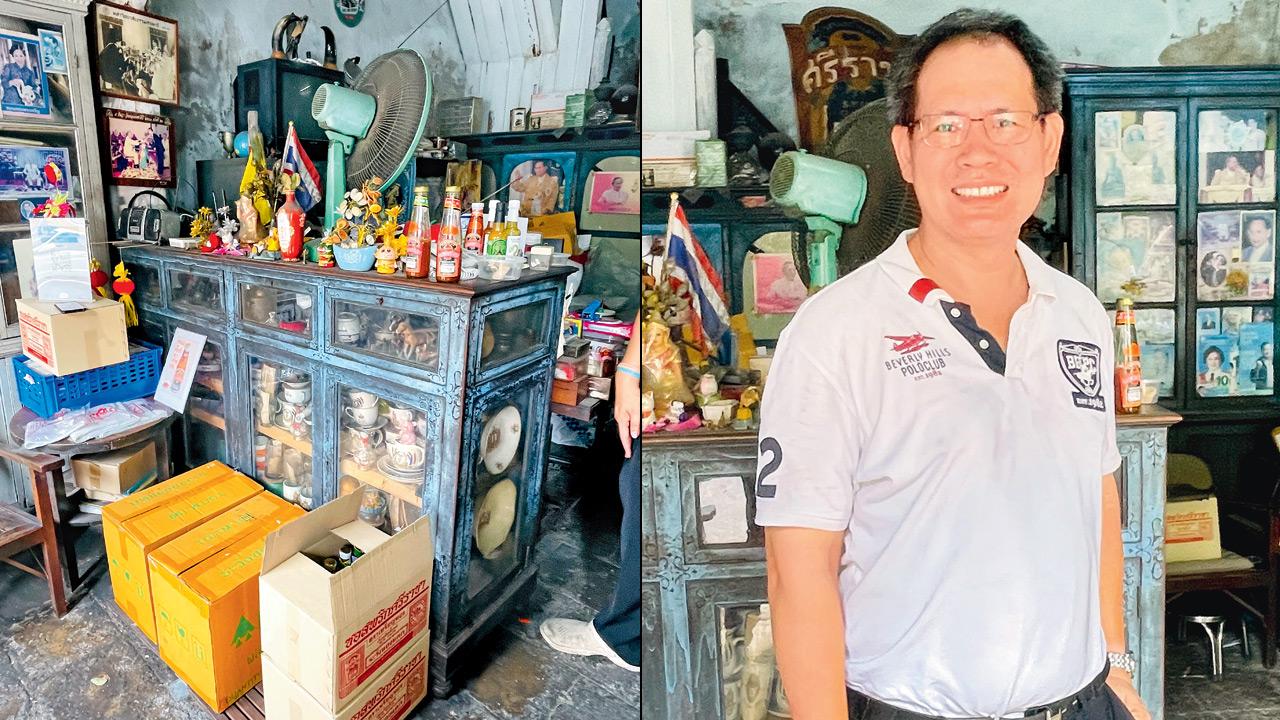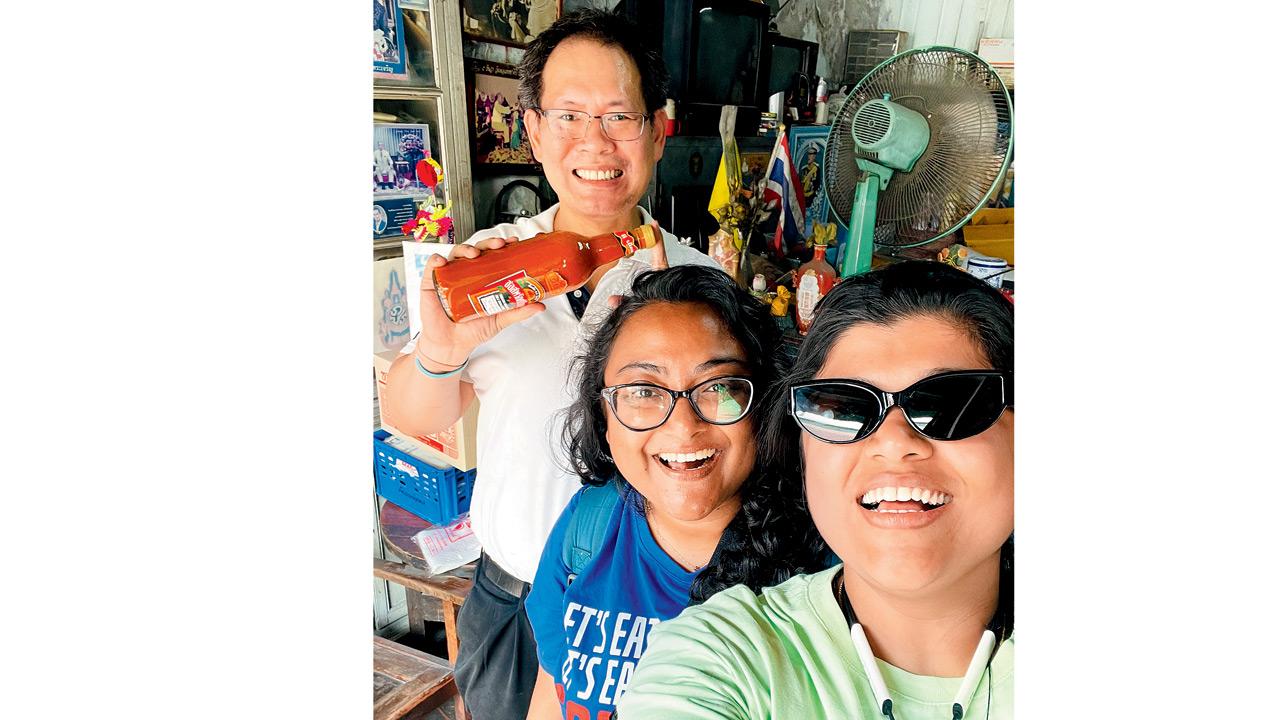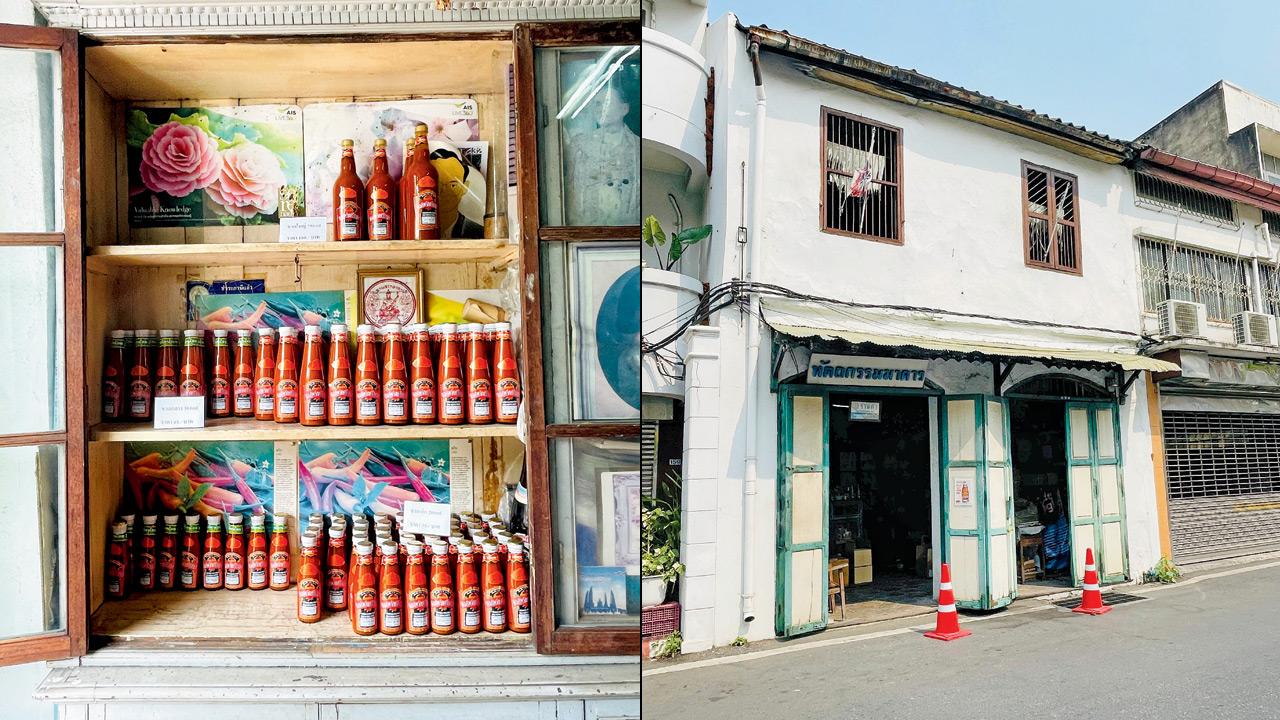Two besties and long-time fans of Sriracha go on a hunt for the OG version of the hot sauce in Thailand, and discover the 90-year-old legacy of the family that continues to make it by hand to this day

The Michelin Bib-winning mango sticky rice at K Panich
I’ve never understood people who slather ketchup all over everything. Now, hot sauce, on the other hand, that’s the real deal. Fried chicken, sandwiches or noodles, everything’s better with hot sauce. My poison? Sriracha. It’s one of the common loves that cemented the bond between my bestie, Heli, and me. We loved its mild heat and the slight tangy kick from vinegar, rounded off with a touch of garlic.
There was another reason we loved it: The lore of friendship. Specifically, the lore of the iconic Huy Fong Sriracha (also known as “rooster sauce” because the label features the bird prominently). The iconic green-top bottle is largely considered to be the “original” Sriracha. It’s not, but we’ll get to that in a bit. Huy Fong was set up in California in the 1980s by Vietnamese migrant David Tran, who only used red jalapeno peppers from one source: his friend Craig Underwood’s farm. Underwood, in turn, sold only to Tran. Their 30-year partnership made them millions of dollars. Aah, friendship, the spice of life.

The store had the look of a grandmother’s bedroom, stuffed with an ancient TV, photographs, crockery and other prized possessions that tell the story of generations past
When COVID-19 hit, and Sriracha supplies dried up, we assumed it was just the pandemic’s impact. Mind you, there are plenty of knock-offs, but they all tasted wrong—too sweet, too bland, too garlicky. Then the news broke: Huy Fong Sriracha and Underwood Farms had broken up, and it was uncertain if the rooster sauce would ever return.
It was only last year that we discovered Huy Fong was a knock-off too! When Heli and I started planning our trip to Thailand last year, she discovered that the OG Sriracha was not Vietnamese but Thai in origin. The hot sauce hails from the coastal town of Si Racha, where the recipe has been traced to the family of Gimsua Timkrachang. One of his daughters brought it to Bangkok in 1932, bottling and selling the family formula from a store in the Thai capital. Ninety years later, the fourth generation of the family continues to sell the artisanal sauce—named Gold Medals after the many won by the recipe—from the same store christened Hattakamamakarn (“house of handmade”).
And so, Heli and I find ourselves bonding over Sriracha again! A detour to Si Racha is tempting—also because the district is home to the viral pygmy hippo, Moo Deng—but it would have eaten up an entire day in our short vacation. Instead, we zero in on Hattakamamakarn. Located in Phra Nakhon, the heritage precinct at the heart of Bangkok city, it’s a 45-minute cab ride from Suvarnabhumi airport.

Sulakkin Suwanprasop, the great-grandson of the recipe’s originator, now runs the store and gave Sunday mid-day’s Debjani Paul (centre) and Heli Shukla (right) a warm welcome. Pics/ Heli Shukla & Debjani Paul
On the last, blisteringly hot day of our trip, we make a breathless detour there while transiting between the city’s two airports (we suggest using the Grab cab app). We squeal on spotting the faded green-and-cream storefront, but rein in our excitement. We’d read that the family still makes the sauce by hand in a process that takes weeks for a single, small batch. They make just one batch a month, and the bottles sell out long before the month is done.
We walk in and discover Timkrachang’s great-grandson Sulakkin Suwanprasop at the counter, contentedly watching a Thai soap opera while labelling bottles of the orange-red sauce. They aren’t sold out yet! We look around the shop and it’s like time has stopped there. The store bears the look of my grandma’s bedroom: stuffed with an ancient TV, photographs, crockery and other prized possessions that tell the story of generations past.
Suwanprasop hits pause on his afternoon soap and turns to us, all smiles. Would we like to try the mild or spicy Sriracha, he asks us. Cautiously, we ask to try the mild first (we’d been burned by the Thai spice level already). We taste half a spoonful each and our eyes widen in delight—“So fruity!” There’s a pleasant fruity tang from the chilli and fermentation process. Unlike the Americanised version we’re used to, the Thai sauce is a harmonious blend of hot (from spur chillies), sour (vinegar), sweet (sugar), salt and umami (garlic). A simple recipe for a complex balance of flavours.

The shop, located on prime real estate in the heart of Bangkok, has only sold one item for more than nine decades—Sriracha in two variants, mild and spicy
We try the spicy version next, and while there’s still a fruity backnote, this time, the sauce packs a punch, thanks to the use of bird’s eye chillies. Even so, it’s not a punishing, single-minded heat; it has that same flawless balance or “klom klom”—a crucial marker of Thai cuisine, in which no one flavour is meant to overshadow another.
“We still grind the peppers by hand on an old stone mill,” says Suwanprasop, switching between English and Thai. “We make just 600 bottles a month. We don’t want to mass-produce. It tastes good because we make it by hand.”
All that effort and time, and yet the artisanal sauce is extremely affordable. At 35 Baht (Rs 90) for 200 ml, 45 Baht (Rs 115) for 300 ml and 100 Baht (Rs 260) for 750 ml, this is the cheapest souvenir from our trip. We pick up as many of the glass bottles as we dare carry in our luggage for family and friends back home.
Suwanprasop is thrilled by our joy. For him, it’s not about the money, it’s about the family’s legacy. “This is the original Sriracha,” he says with pride, “all others came after it.”
We know, we say. There’s one other Thai brand that claims to be the OG—Sriraja Panich—but that was launched three years after Suwanprasop’s brand. Ironically, Sriraja Panich is also the same family’s legacy; it was launched by Timkrachang’s niece. In fact, there are two more family offshoots with their own brands based on Timkrachang’s original recipe. Sriraja Panich is the only one available in India (on Amazon), though. So, if you can’t make it to Thailand, it might be worth a try.
Sugar after spice
Pro tip: If sampling the Sriracha has left you sweating, just walk 350 m down the road to the legendary K Panich, a 98-year-old family-run sweet shop that has won the Michelin Bib Gourmand six years in a row for its mango sticky rice. The rice is delightfully soft and gummy, and drenched in coconut milk. It’s the perfect complement to the firm, sweet-and-tangy Thai mango. At 125 Baht (R320), it’s an affordable way to beat the Bangkok heat as well.
 Subscribe today by clicking the link and stay updated with the latest news!" Click here!
Subscribe today by clicking the link and stay updated with the latest news!" Click here!








